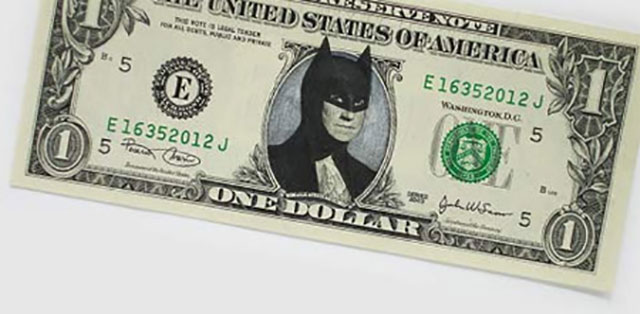Photo Credit: Dollar Bill Art
People spend their lives trying to figure out how to make money, but do they know how money is literally made? You might be surprised to discover what materials involved in money production and how long it takes to actually turn a bill into the form you recognize and use on a daily basis. Here is a breakdown of almost every aspect of the money-making process.
What are dollar bills made out of?
You’d be right if you said, “paper,” but you’re missing out on the most interesting part of the answer. According to howstuffworks.com, notebook paper, newspaper, and other types of “normal” paper are made out of cellulose, meaning it’s the type of paper that comes from trees. Paper money, however, isn’t — instead, U.S. bills involve paper made of rags. Fun fact: This is why money doesn’t disintegrate in the washing machine!
The paper used to make money in the United States is made out of 75% cotton and 25% linen, according to CNN Money. Wouldn’t be your first guess, right? Because of the high price of cotton in 2010, the cost of making a note increased 50% from what it cost in 2008, according to the same article. So the price of cotton actually has a big impact on the cost of making paper money.
Where are they created?
Money hangs out in your bank and in your wallet, but where are the actual bills born? The Bureau of Engraving and Printing, part of the U.S. Department of Treasury, is responsible for the production of paper money in the United States. There are two facilities, one in Washington, D.C., and the other in Fort Worth, Texas.
There are hour-long tours available of the D.C. facility that show visitors the steps of money production. Participants can see how blank sheets of paper can turn into the completely finished bills. Tours are available at the Fort Worth location, as well, and they run close to an hour. If you’re use to trading commodities online, this tour will teach you what it takes to make those bills that back your trading.
What is the dollar-making process?
Creating money isn’t a quick task, and it might involve a lot more work than you may have thought. The process of making a bill takes about 4 months, according to the Los Angeles Times. According to the Bureau of Engraving and Printing’s website, the production isn’t easy, and it “involves highly trained and skilled craftspeople, specialized equipment, and a combination of traditional old world printing techniques merged with sophisticated, cutting edge technology.” Sounds intense, right?
The process is definitely a detailed one. According to the LA Times article’s source Charlene Williams, the offset is the start of the process, which involves color being incorporated into the bill. Next is intaglio printing, which involves fine, detailed engraving. Toward the end of the process, letterpresses add official seals and serial numbers. The complete breakdown of every step of the process can be found here.
How is counterfeit prevented?
The Bureau describes the measures it takes to prevent counterfeiting, which includes enhancing the dollar’s design every 7 to 10 years. There are also a variety of other precautions that have been taken over the years. For example in the 1996 series of notes, color-shifting inks, watermarks, larger portraits (which are more detailed and harder to copy), and other features made the money harder to counterfeit.
Recently, the $100 has been redesigned and features many counterfeit-prevention qualities. A new, 3D blue strip is included that contains little Liberty Bells until it’s tilted and the Liberty Bells turn into the number 100, according to the New York Daily News. The strip isn’t even painted onto the bill — it’s woven on. There’s also a “color-shifting bell” that changes from copper to green when tilted.
Conclusion
If you’ve looked at bills and simply seen them as a piece of green paper, look again. A lot of thought and work goes into the strategic design and creation of the United States’ currency, and it’s both an intricate and fascinating process.

